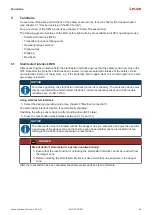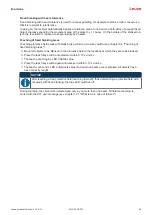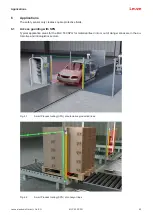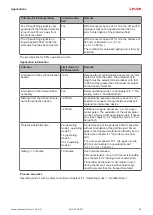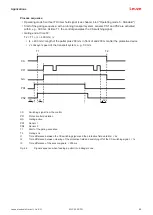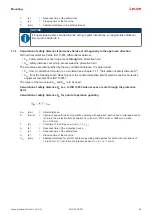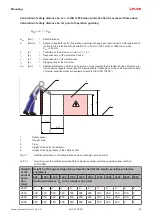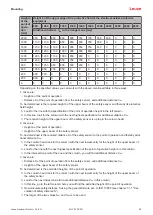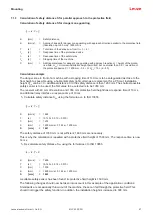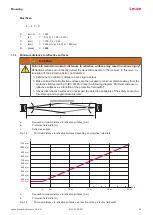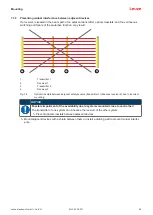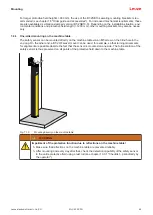
Mounting
Leuze electronic GmbH + Co. KG
MLC 530 SPG
51
7
Mounting
WARNING
Improper mounting may result in serious injury!
The protective function of the safety sensor is only ensured if appropriately and professionally
mounted for the respective, intended area of application.
Ä
Only allow the safety sensor to be installed by qualified persons (see chapter 2.2 "Neces-
sary competencies").
Ä
Maintain the necessary safety distances (see chapter 7.1.1 "Calculation of safety dis-
tance S").
Ä
Make sure that stepping behind, crawling under or stepping over the protective device is reli-
ably ruled out and reaching under, over or around is taken into account in the safety dis-
tance, if applicable with additional distance C
RO
corresponding to ISO 13855.
Ä
Take measures to prevent that the safety sensor can be used to gain access to the danger
zone, e.g. by stepping or climbing into it.
Ä
Observe the relevant standards, regulations and these instructions.
Ä
Clean the transmitter and receiver at regular intervals: environmental conditions (see chap-
ter 15 "Technical data"), care (see chapter 11 "Maintenance").
Ä
After mounting, check the safety sensor for proper function.
7.1
Arrangement of transmitter and receiver
Optical protective devices can only perform their protective function if they are mounted with adequate
safety distance. When mounting, all delay times must be taken into account, such as the response times of
the safety sensor and control elements as well as the stopping time of the machine, among others.
The following standards specify calculation formulas:
• IEC 61496-2, "Active optoelectronic protective devices": distance of the reflecting surfaces/deflecting
mirrors
• ISO 13855, "Safety of machines - The positioning of protective equipment in respect of approach
speeds of parts of the human body": mounting situation and safety distances
NOTICE
In accordance with ISO 13855, with a vertical protective field, it is possible to pass under beams
over 300 mm or pass over beams under 900 mm. If the protective field is horizontal, climbing on
the safety sensor must be prevented through suitable installation or with covers and the like.
7.1.1
Calculation of safety distance S
NOTICE
When using blanking, observe the necessary additional distances to the safety distance (see
chapter 7.1.5 "Resolution and safety distance during fixed blanking").
General formula for calculating the safety distance S of an Optoelectronic Protective Device acc. to
ISO 13855
S
[mm]
=
Safety distance
K
[mm/s]
=
Approach speed
T
[s]
=
Total time of the delay, sum from (t
a
+ t
i
+ t
m
)
t
a
[s]
=
Response time of the protective device


